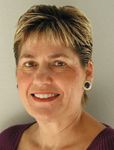- Acne
- Actinic Keratosis
- Aesthetics
- Alopecia
- Atopic Dermatitis
- Buy-and-Bill
- COVID-19
- Case-Based Roundtable
- Chronic Hand Eczema
- Chronic Spontaneous Urticaria
- Drug Watch
- Eczema
- General Dermatology
- Hidradenitis Suppurativa
- Melasma
- NP and PA
- Pediatric Dermatology
- Pigmentary Disorders
- Practice Management
- Precision Medicine and Biologics
- Prurigo Nodularis
- Psoriasis
- Psoriatic Arthritis
- Rare Disease
- Rosacea
- Skin Cancer
- Vitiligo
- Wound Care
Article
Billing for Mohs procedures, warts, ulcers
Q I billed Medicare for the following services. All of the Mohs procedures were denied. Patient was in a 90-day postoperative period for a flap that was done 20 days earlier. Tell me how I should have coded to avoid the denials of my Mohs services?

Billed: 17304 (denied) 17304-76 (denied) 17305 (denied) 17305 -76 (denied) 14060 -79 (paid) 13132 -79 (paid)
A You should have billed: 17304-79, 17304-79, 76, 17305-79, 17305-79, 76, 14060-79, 13132-79
Q Is it appropriate to use CPT codes 17000, 17003 and 17004 to bill for warts treated using DNCB?
A No. DNCB (also known as dinitrochlorobenzene) is a chemical used in the development of color photography. Research has shown that it is/may be effective in the treatment of AIDS, atopic dermatitis, hair loss and warts. DNCB doesn't really treat warts. The chemical basically activates the immune system, making subsequent treatment more effective. There is no way to bill for this. It can be part of the medical decision-making component of your E/M service.
Q Can pathology codes (e.g., 88304 and 88305) be billed in units, or must they be billed on separate lines of the CMS-1500 form? I feel that I can't bill in units because frequently the codes have different diagnoses. Therefore, in order to bill, I need to separate the services on different lines. Unfortunately, this often causes denials. How do I get paid and still correctly reflect the services I am billing for?
A Whether you are billing 88304 or 88305 globally, just the technical component (e.g., 88304-TC, 88305-TC) or just the professional component (e.g., 88304-26, 88305-26), you should always bill the codes in units if more than one is performed on the same date of service (regardless if there is more than one diagnosis). In block 21 of the claim form you can list multiple diagnoses, but in block 24E, only one of the four should be reflected. Separating the codes on multiple lines will result in denials for duplicate charges.
Q When I bill for treating warts using the Candida antigen, can I bill CPT code 17110? Is this a covered service?
A CPT code 17110 is only for the treatment of molluscum contagiosum or flat warts. Warts treated using the Candida antigen are injected intralesionally so the correct CPT code should be 11900 or 11901. There is no J code for the antigen, so there is no way to get reimbursed for the antigen. And yes, if the procedure is billed this way, the carriers will cover the treatment.
Q Our doctor saw a skilled nursing facility patient on consult on Oct. 15, 2005, for evaluation of a possible ulcer. The patient was seen at the same facility in March 2002 for another condition. Can I bill an initial inpatient consultation code (e.g., 99251 -99255)? If the doctor is called back in a month or so, what follow-up visit code would be billed? Will this change in 2006?
A Per CPT, an initial inpatient consultation service can only be billed once per admission or once every three years, whichever is appropriate. Unfortunately, in the SNF, patients can be in the same facility for years under the same admission, so the initial inpatient consultation codes can only be billed once every three years. You need to use the subsequent follow up consultation codes for inpatient services; codes 99261 – 99263 for the "initial" visit in 2005. Any follow-up to the problem needs to be billed using the subsequent nursing facility care codes 99311 – 99313.
Newsletter
Like what you’re reading? Subscribe to Dermatology Times for weekly updates on therapies, innovations, and real-world practice tips.
















